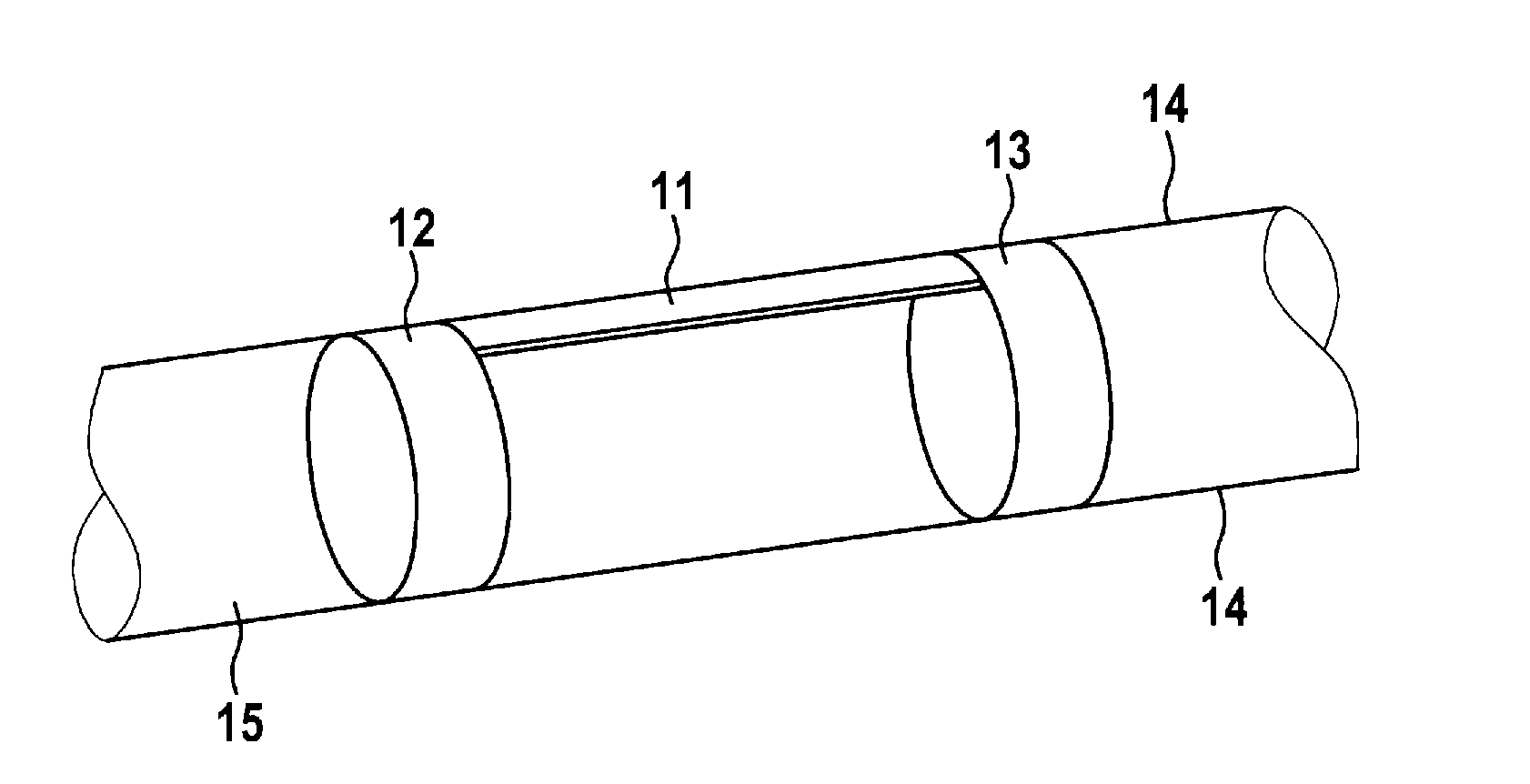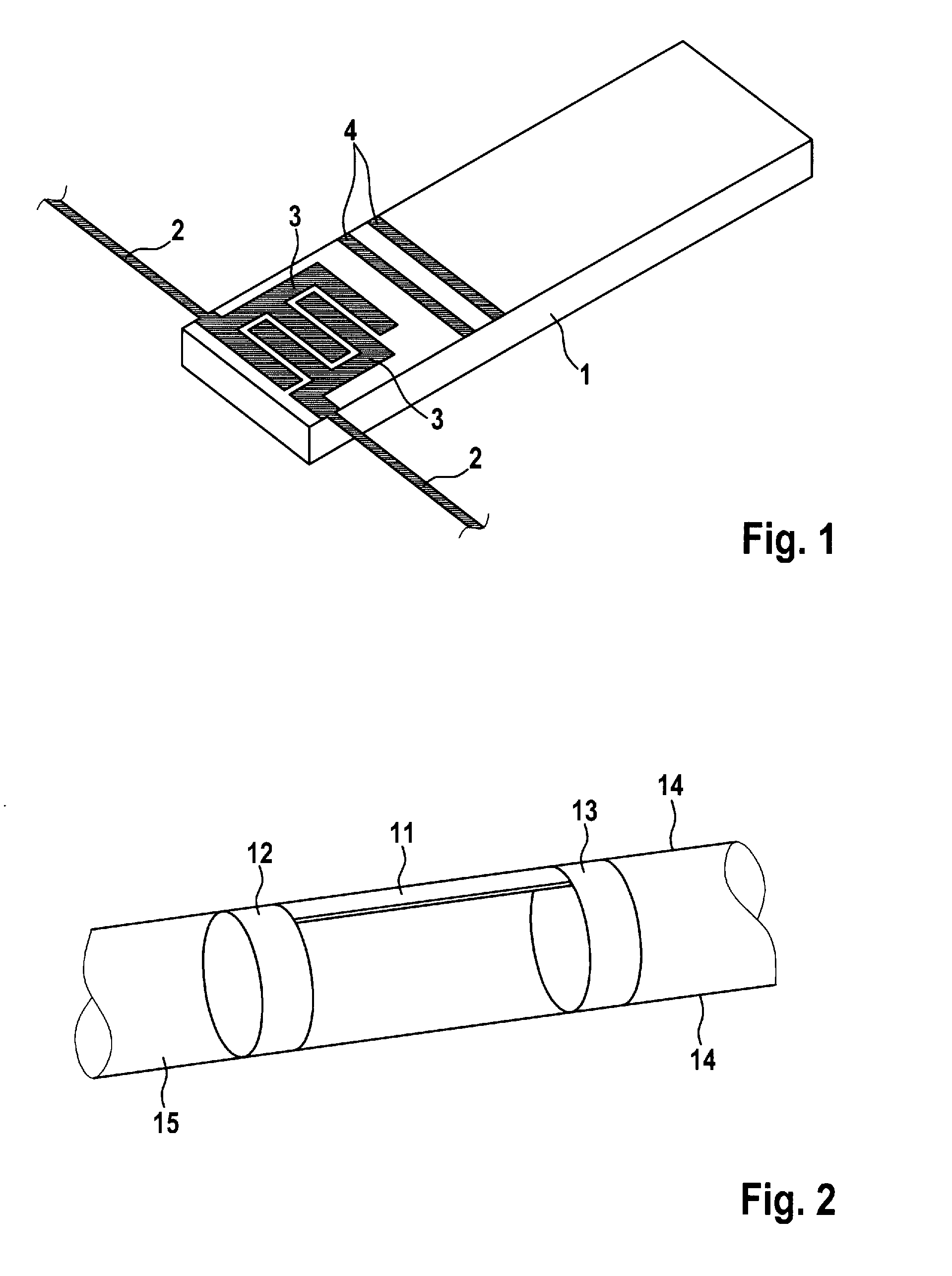Intravascular Measurement
a technology of intravascular measurement and sensor, which is applied in the field of implantable sensors, can solve the problems of affecting the health of patients, affecting the flow of blood, and affecting the quality of life of patients, and achieves the effects of reducing the risk of thrombosis
- Summary
- Abstract
- Description
- Claims
- Application Information
AI Technical Summary
Benefits of technology
Problems solved by technology
Method used
Image
Examples
Embodiment Construction
[0026]FIG. 1 shows a schematic diagram of a surface acoustic wave transponder. At one end of the carrier 1, interdigital converters 3 connected to an antenna 2 are applied to a carrier 1 consisting of a piezoelectric single crystal; these interdigital converters 3 have a toothed structure and generate a surface wave in the carrier 1 based on the force of the electromagnetic field which occurs on reception of a query pulse via the antenna 2 and acts on the piezoelectric material of the carrier 1. The antenna 2 here is embodied as a divided half-wave dipole, so the interdigital converters 3 pick up the received signal at the center of the antenna 2. The surface wave passes through the carrier 1, where it is exposed to influences due to changes in the path length due to deformation of the carrier 1 and based on elastic crystal constants. Two reflectors 4 are mounted on the carrier 1, generating reflections of the surface wave with a certain interval between them based on the fixed dist...
PUM
 Login to View More
Login to View More Abstract
Description
Claims
Application Information
 Login to View More
Login to View More - R&D
- Intellectual Property
- Life Sciences
- Materials
- Tech Scout
- Unparalleled Data Quality
- Higher Quality Content
- 60% Fewer Hallucinations
Browse by: Latest US Patents, China's latest patents, Technical Efficacy Thesaurus, Application Domain, Technology Topic, Popular Technical Reports.
© 2025 PatSnap. All rights reserved.Legal|Privacy policy|Modern Slavery Act Transparency Statement|Sitemap|About US| Contact US: help@patsnap.com


